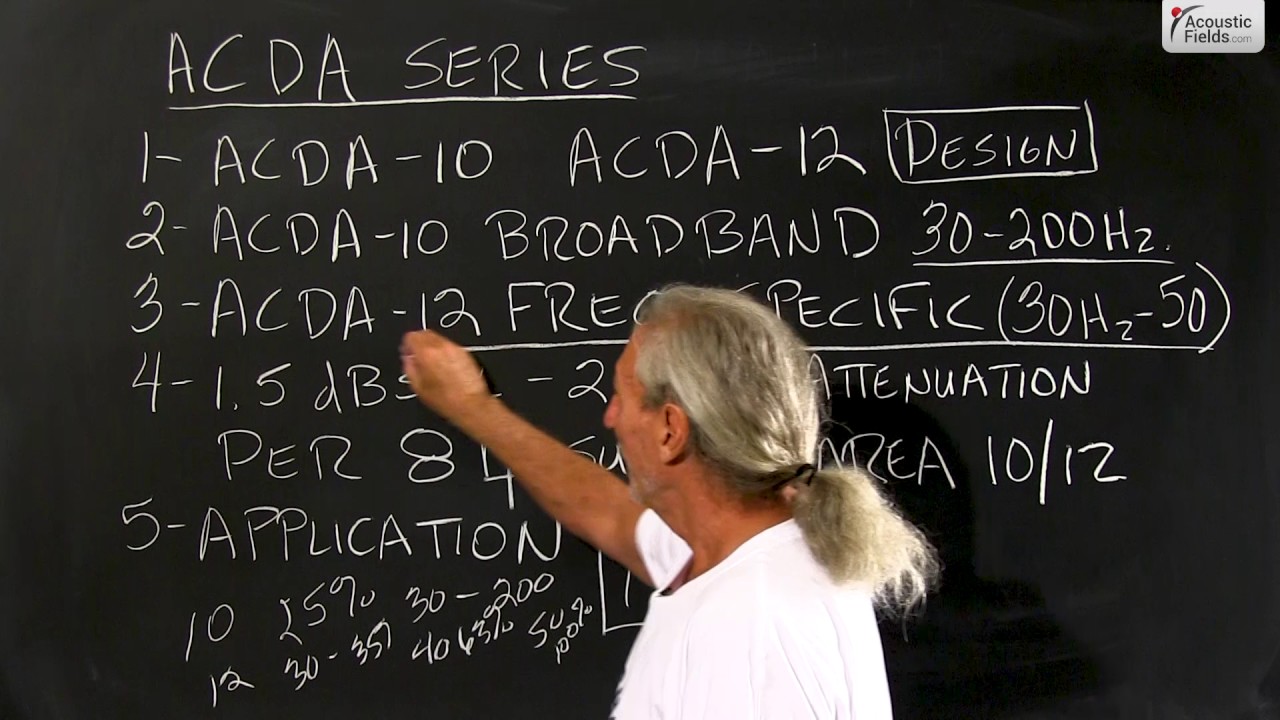Let’s talk about our ACDA series. Now, what does ACDA stand for? Activated carbon diaphragmatic absorption. So it’s a technology I created about 15 years ago and I did a lot of work in small rooms, corporate boardrooms, built a lot of office buildings, a lot of rooms where there was audio issues in it.
So I came across these two technologies. Well, I came across diaphragmatic absorption as the most powerful technology that was currently in use. And you have that in your walls and we’ll talk about that in another video. But diaphragmatic is an absorption process that’s really good for low frequencies. And it’s calculated. We can calculate the rate and the level of absorption with a formula.
So I started to look at the formulas and I started to look at these rooms that I was working in in designing and measuring more importantly and I started to see two types of problems. I started to see a broadband problem from 30 to 200, almost all rooms had this. And then I started to see a really frequency-specific problem from 30 to 50. So that became the impetus for the 10 and the 12. And we manufacture them now at the same depth but inside each unit the 12 is a little bit deeper than the 10 and then we make some changes also inside.
But what do we have now with these two units? We have a frequency-specific sponge that does a great job and you can go on our website and see our performance characteristics. I think our 10 is a broadband at about a 25% average absorption coefficient from 30 to 200 but our 12 is really powerful and I think at 30 we’re about 35%, at 40 we’re 63% on sample size and at 50 we have 100% absorption. So really powerful. These are very heavy units, over 200 pounds each. But like I tell people, these are very serious tools because low frequency is a very serious problem.
So let’s look at what we can do in terms of predictability and consistency when they look at what their performance is. Well, we know that they attenuate about 1.5 to 2 dB for every 8 square foot. That means square footage. Every 8 square foot of surface area. So if we have a plus 10dB bump, we know that one unit is going to get us about 2 dB. 2 units are going to get us about 4. 3 units are going to get us about 6 and we just keep working on this trough and we keep lowering its unwanted pressure for sure and we try to get it down to a baseline level.
So you can see the amount of units that you’re going to need, adds up quickly. Obviously you can go in the DIY section and build it yourself. We’re going to discontinue letting people use our carbon technology inside because there’s always someone trying to steal it from us. So we’re going to discontinue the carbon shortly in the DIY series so if you’re interested in using it, now is the time to get it. But in our production units you’ll still have it available in our production units.
So a predictable and consistent tool that you can apply to bumps. It’s not foam because remember, foam won’t work here, it’s not building insulation designed to keep your house warm and cool. It’s an actual acoustic tool designed with actual science behind it to solve a real problem.
So that’s a breakdown on our ACDA series. We’ll do some other videos on some of our other technologies like our foam. So I hope that helps clarify some of the differences between the 10 and the 12 and why I designed it.
—
This is an unedited transcript from our video series from Acoustic Fields. There will be some errors in grammar and sentence structure that occur during this translation process.
For complete understanding and comprehension, please view the video which is included in this text. For any additional information regarding this topic or others relating to room acoustics, please contact us directly at:
P: 520 – 392 – 9486







